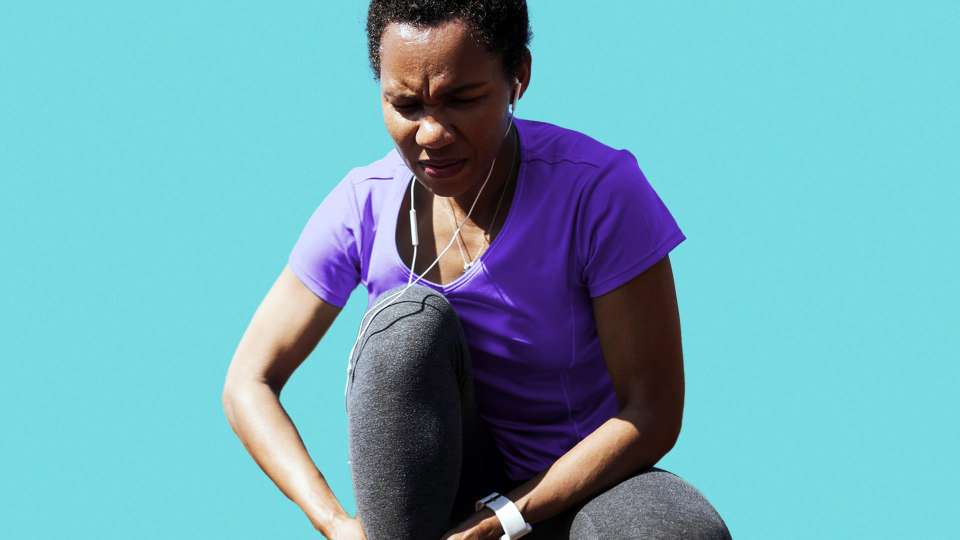4 Ways to Stop Muscle Cramps From Interrupting Your Run

No matter how prepared you may be for the big run, it just takes one quick muscle cramp to throw you off your game. So, how do you deal with that pesky sensation? We’ve got some ideas to get your feet back to pounding the pavement.
What are muscle cramps?
Usually described as a sudden and often painful contracting of muscles, muscle cramps are one of the most common — and irritating — medical conditions encountered by runners. Though calf muscles are usually the hardest hit, other muscles that tend to contract rapidly during runs, like the hamstrings and quadriceps, can also be affected.
The discomfort of muscle cramps generally lasts anywhere from a few seconds to a few minutes, but the area may stay sore for a short time after.
The cause of the cramps
Though there are many reasons for cramping muscles, they often occur during or immediately after exercise, which is called exercise associated muscle cramping or EAMC for short.
Many people believe that running in warm weather predisposes them to EAMC, but really, cramps can occur in cold and moderate temperatures as well. A popular belief is that electrolyte losses and severe dehydration during exercise can cause EAMC, but research hasn’t necessarily supported this.
There is now a growing body of scientific evidence suggesting that cramping may be due to a temporary alteration in nerve and muscle control related to fatigued muscles. You can think of the nerve and muscle interface as an electrical circuit where the nerve is the electricity that supplies the muscle, causing a muscle contraction. Muscle fatigue can occur because of increased running intensity (like when you’re running faster during a race than your normal training pace) after inadequate conditioning. Once the race is over, the electrical supply (the nerve) to the muscle may be altered, resulting in the cramping sensation.
Some other common reasons for cramping include a prior history of tendon or ligament injury, your genes and poor conditioning.
How to treat muscle cramps
Luckily, there are a few simple ways to help prevent and relieve muscle cramps.
Passive stretching of the affected muscle
Stretching it out can help end a cramp. For example, if you have a hamstring cramp, straighten your leg by extending your knee to stretch out the affected hamstring.
Massage the muscle
Gentle massage may offer some relief, too. You can lightly knead your sore muscles to loosen them up or even apply some heat to the area to help your muscles relax.
Treat your body well
Maintain proper muscle conditioning, get adequate rest between training sessions and stretch regularly. Decreasing your stride length (the distance between successive points of contact of the same foot) can also be helpful.
Mix things up
Especially for long distances, it's important to change your stride rate, foot strike pattern, or running form periodically to help avoid muscle fatigue by activating your leg muscles differently, which also gives well-deserved rest to your working leg muscles.
When to see your doctor
Muscle cramps usually go away on their own and shouldn’t cause too much alarm. But there are some instances when it’s best to get checked out by a professional. These include:
- Excessive pain and discomfort.
- Leg swelling, redness or skin changes.
- Muscle weakness.
- Cramping that reoccurs often and doesn’t get better with self-care.
Mark Harrast, MD, is a sports medicine physician and medical director of the Sports Medicine Center at Husky Stadium and the UW Medicine Seattle Marathon. He specializes in diagnosing and treating sports-related injuries and illnesses in endurance athletes, runners and triathletes. He is also an accomplished competitive endurance athlete himself.

 Healthy ideas for your inbox
Healthy ideas for your inbox





